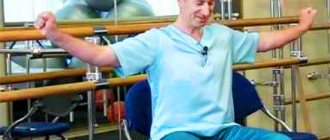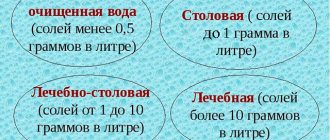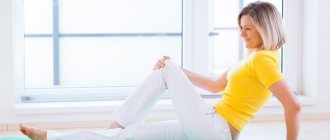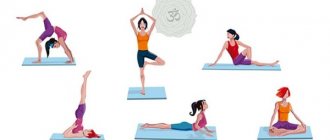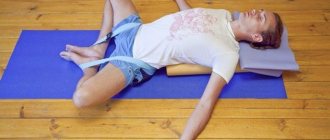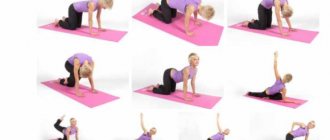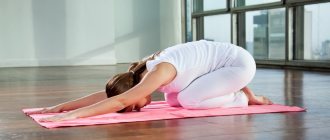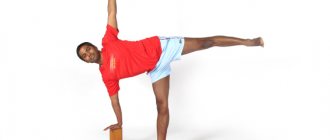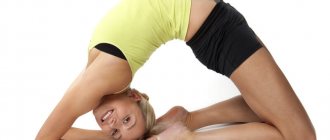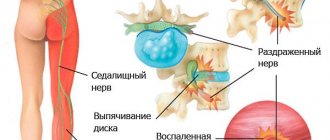Indications for surgical treatment
Surgery is indicated for patients with severe forms of deforming arthrosis. They resort to it if there is no effect from conservative treatment. Deforming osteoarthritis of the knee and shoulder joint does not respond well to drug therapy and requires surgical intervention.
Indications include:
- severe pain that cannot be relieved with painkillers;
- infection - purulent cavities have formed in the joint;
- complete or partial immobility;
- severe cartilage deformities;
- internal damage to the joint, accumulation of bone fragments in the cavity.
Surgical treatment of osteoarthritis is a proven technique that can alleviate the patient’s condition. Drastic measures are resorted to when there is no alternative. Endoprosthetics operations show the greatest effectiveness. Treatment involves replacing joint tissue.
What movements are prohibited
When joints become painful, other musculoskeletal structures in the legs also weaken. The load begins to be redistributed incorrectly, which leads to muscle dystrophy, sprains of ligaments and tendons.
Arthrosis and yoga will be compatible if the patient does not perform the following exercises:
- Exercises on a treadmill;
- Lifting weights;
- Training in water whose temperature is below 22 degrees;
- Exercise on an exercise bike.
Activities performed in water bring great benefits to the knee joint affected by arthrosis. However, it is imperative to monitor its temperature. Cool water increases the risk of a cold knee, and in this case, training will do more harm than good.
Yoga at home
Some simple and safe asanas can be performed independently at home. While performing all asanas, you need to monitor your breathing. It should be calm and even. For maximum effect, you need to perform asanas several times a day.
Important! During exercise, it is imperative to maintain a balance between rest and stress on the joints.
Standing exercise
- Place your feet shoulder width apart.
- Relax your hands.
- Reach your fingertips to your toes. If you can’t do this right away because of pain in your knee, then you shouldn’t bother. You need to grab your legs from behind, press against them and lower your body down until pain appears.
- Remain in this position for up to 1 minute.
Exercise while sitting
Suitable for those who find it difficult to perform asanas while standing. It reduces the load on the knees.
- Take a sitting position.
- Straighten your legs. Keep your back straight.
- Use your fingers to touch your toes until pain appears.
- Remain in position for a few minutes. The toes should point forward.
- Repeat 2 times.
Is it allowed to do yoga?
Movement is life. But when arthrosis is diagnosed, there is a desire to take care of the joints without unnecessarily loading them. Yoga is a special form of gymnastics that includes a set of different exercises. Due to deterioration in motor activity and decreased joint mobility, patients are interested in whether it is possible to practice yoga with arthrosis of the knee joint.
Yoga for arthrosis is a good method of combating the disease, but only in the early stages. Joint destruction in this disease occurs quickly, and each exacerbation causes severe pain and swelling. It is important to act immediately to preserve the condition of intact cartilage tissue.
On a note!
Not all yoga movements are suitable for patients with arthrosis. It is important to choose the right set of measures that will not cause harm.
Yoga classes for knee arthrosis
Precautionary measures
Although yoga exercises are gentle and smooth, we must not forget about precautions. Even while training at home, you can get injured, which will complicate the recovery process and bring new difficulties.
- Yoga for arthrosis of the knee joint
You can protect your joints with arthrosis by following these recommendations:
- Use knee pads;
- Before training, always do a thorough warm-up;
- Use a special shock-absorbing mat;
- Do not exceed the usual loads;
- Take your time when performing movements.
Important!
Whatever exercises you choose, you should consult your doctor before starting exercise.
Taking precautions when practicing yoga
There will be less risk of injury if you perform the actions correctly. It is best to practice lying down or sitting. In this position, the sore joint will be maximally unloaded, which means it will not be damaged.
When performing the procedure, you should not strain. The muscles should be as relaxed as possible. There should be no pain. You should not make any movements using force.
How to avoid injury and pain after yoga?
The most important thing is not to start new unusual physical activities without first consulting a doctor and assessing individual limitations. Thus, some problems with the spine are a contraindication either to yoga in principle or to individual exercises. And with arthrosis, for example, it is not recommended to load the affected joint in the vertical plane and restriction of its flexion is indicated.
In addition, it is important to find an experienced and competent yoga teacher, which, unfortunately, is still in short supply in Russia, which is why students often suffer from injuries and health problems. A good yoga instructor should be familiar with basic physiology and anatomy. Before starting classes, he must make sure that the beginner has no contraindications, explain the rules for performing each exercise and discuss safety precautions.
In addition to competent guidance, an individual approach is also important, taking into account both the general state of health and body, age, lifestyle, as well as the characteristics of the body and existing disorders. There are no universal complexes in yoga - all exercises, their number, sequence and duration of execution must correspond to the physical condition of the practitioner. That is why yoga classes in large groups, where the level of training and health status of the students are different, and the instructor is not able to keep track of everyone’s exercise technique, pose a particular danger.
Of course, well-chosen moderate physical activity has a beneficial effect on the human body. However, mastering yoga must be gradual, otherwise this practice can become downright dangerous. It is extremely important to never exercise through pain or allow significant discomfort. Such sensations are a signal that something is being done incorrectly or that the body’s capabilities are being exceeded. Under no circumstances should there be an atmosphere of competition or attempts to surprise anyone with your strength and flexibility. This is especially true for beginners “prepared” in another sport, who tend to overestimate their capabilities.
It must be remembered that the pursuit of quick results inevitably increases the risk of injury.
At the MART clinic on Vasilyevsky Island
- Experienced doctors (including those practicing in the USA and Europe)
- Prices affordable for everyone
- Expert level diagnostics (MRI, ultrasound, tests)
- Daily 8:00 — 22:00
Make an appointment
Basic exercises
REFERENCE. When performing asanas, you need to focus on the sore joint and mentally imagine how blood flows to the knee and how the joint is restored.
Utkatasana ("on toes")
This exercise is aimed at maintaining balance, which allows you to include even small ligaments that stabilize the knee joint. Do up to 3 approaches for 1-1.5 minutes.
- You need to stand up straight, spread your arms to the sides.
- Stand on your toes.
- As you exhale, slowly squat on your toes. Bend your knees no more than 90 degrees. Your back must be kept straight.
- Inhale and slowly return to the starting standing position.
Watch
- Become in Utkatasana.
- Feet together, knees bent at an angle of no more than 90°. The body is directed forward, the back is straight. Hands in front of you or on your pelvis.
- You need to imagine that you are standing in the center of a watch dial, facing the number 12.
- Shift your weight to your left leg, and inhale and extend your right leg forward. Do not touch your feet to the floor. We reached the number 12.
- With an exhalation, return the leg to its original position and hold it at a height of 1-2 cm from the floor.
- As you inhale, reach the number 1 with your foot and return your foot to the center again.
- Continue this way until you reach number 9.
- Change leg positions and move your left leg counterclockwise.
- Do 2-3 approaches with each leg.
Utkatasana on toes.
Utkatasana with support on the wall.
- Press your back against the wall.
- Place your heels as far as possible from the wall, your feet are at a distance from each other, parallel.
- Squat down, keeping your back against the wall until your pelvis is at knee level.
- Place an object between your knees and hold it for 1-1.5 minutes.
- After resting, do another 2-3 approaches.
